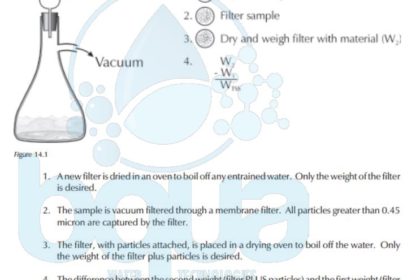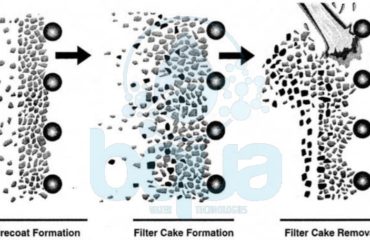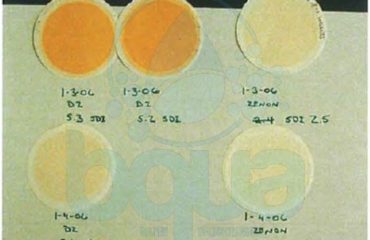
What is Total Suspended Solids – TSS Definition
Total suspended solids (TSS) concentration is a measure of the total weight of solid residuals contained in the source water. It is customarily presented in milligrams per liter or parts per million. Total Suspended Solids can also be defined as a laboratory analysis that measures the weight of suspended solids in a specified volume. It is used to accurately (within the limitations of the test) measure suspended solids concentration. The TSS measurement is the standard method for measuring the weight of suspended solids. The method utilizes a 0.45 micron membrane filter.
Total Suspended Solids TSS measurement test procedure
Total Suspended Solids is the most accurate standard test for monitoring the amount of suspended material in a sample. The problems with it are:
1. It doesn’t tell us anything about the number of particles.
2. It doesn’t tell us anything about the size of particles.
3. It is only a crude measurement of the fouling potential of the particles.
4. It doesn’t measure any particles less than 0.45 micron in diameter.
Even with its limitations, however, it can be a valuable tool for monitoring the solids loading into a Reverse Osmosis System.
TSS is measured by filtering a known volume of water (typically 1 L) through a preweighed glass-fiber filter. Drying the filter with the solids retained on it at 103 to 105°C, and then weighing the filter again after drying. The difference between the weight of the dried filter and of the clean filter, divided by the volume of the filtered sample. Reflects the total amount of particulate (suspended) solids in the source water.
It should be pointed out that because saline water contains dissolved solids which will crystallize and convert into particulate solids when the sample is heated at 103 to 105°C. Often Total Suspended Solids TSS analysis of saline water completed in accordance with the standard methods. For water and wastewater analysis yields an erroneously high Total Suspended Solids TSS content in the water. The higher the source water’s salinity and the lower its particulate content. The more inaccurate this measurement is. In order to address the challenge associated with the standard method of Total Suspended Solids TSS measurement. It is recommended to wash the solids retained on the filter by spraying the filter with deionized water before drying. Unless the source water solids sample is washed before drying, the results of this sample are meaningless.
The laboratory Total Suspended Solids TSS test is completed properly and the filtered sample is well washed to give us a precise measure. This parameter usually provides a much more accurate measure of the actual content of particulate solids in the source water than does turbidity. Because it accounts for the actual weight of the particulate material present in the sample. For comparison, turbidity measurement is dependent on particle size, shape, and color. And typically is not reflective of particles of very small size (i.e., particles of 0.5 µm or less). Such as fine silt and picoalgae. In fact, a change in the ratio of Total Suspended Solids TSS to turbidity is a good indicator of a shift in the size of particles contained in the source water. Which may be triggered by algal blooms, storms, strong winds, and other similar events. Which can result in resuspension of solids from the bottom sediments into the water column.
Typically, an increase in the Total Suspended Solids/turbidity ratio is indicative of a shift of particulate solids toward smaller-size particles. For example, during non-algal-bloom conditions, the TSS/turbidity ratio of an appropriately processed sample is typically in the range of 1.5 to 2.5. Water with a turbidity of 2 NTU would have a Total Suspended Solids concentration of 3 to 5 mg/L. During heavy algal blooms dominated by small-size (pico- and micro-) algae, the TSS of the source water could increase over 10 times (e.g., to 40 mg/L). While the source water turbidity could be multiplied by 2 to 3 times only. For this example it would be in range of 4 to 6 NTU. With a corresponding increase in the TSS/NTU ratio from 2/1 to between 6/1 and 10/1.



